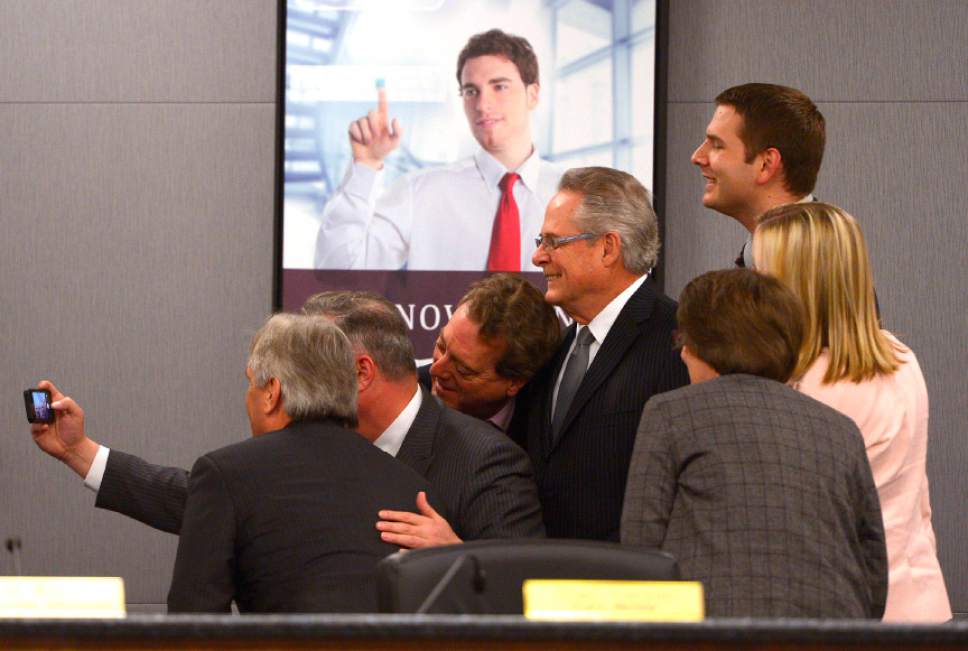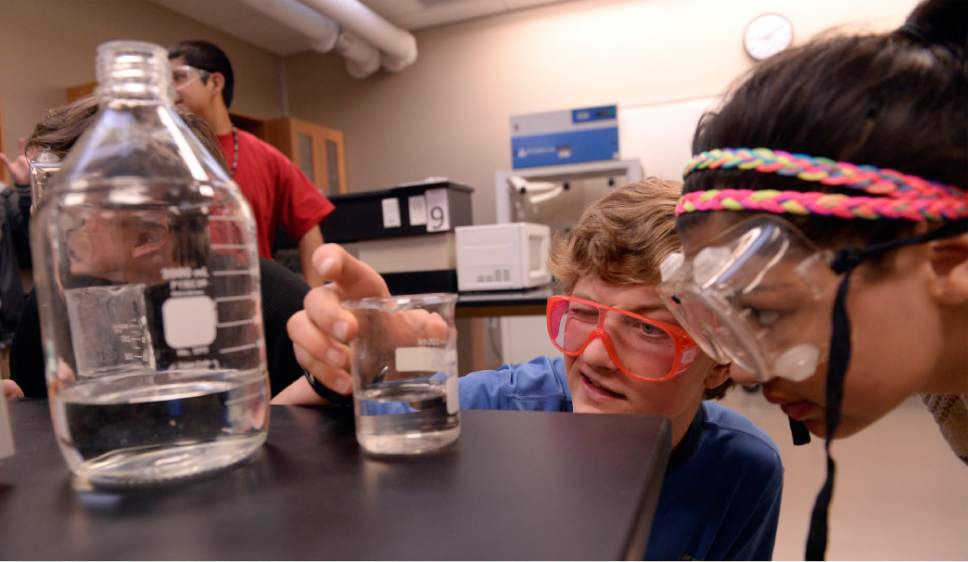This is an archived article that was published on sltrib.com in 2016, and information in the article may be outdated. It is provided only for personal research purposes and may not be reprinted.
Utahns estimate that roughly a quarter of public education funding is spent on school administration, according to a new survey, and would prefer that portion of the budget trimmed to about 14 percent.
But in reality, Utah's school districts spend less than 10 percent of their budgets on administration, with the majority of education dollars directed toward classroom costs like teacher salaries, student services and supplies.
The Beehive State's school administration costs are among the lowest in the nation, averaging $63 per student, compared to a national average of $202, according to the most recent data from the U.S. Census Bureau.
"For me, it was a surprise," Envision Utah spokesman Jason Brown said. "I should trust more that the district is doing the right thing, that it's putting the money into helping students gain knowledge and skills."
Brown said he is likely not the only person who would be surprised by the reality of school budgeting.
Education critics frequently point to administrative costs as an area of inefficient spending, and a survey released Sunday by Envision Utah show that Utahns dramatically underestimate the share of public dollars reaching classrooms.
That misunderstanding of school spending, Brown said, likely contributes to reticence among taxpayers and lawmakers for new investments in public education.
The same survey that tested Utahns' knowledge of budgeting also asked about overall funding levels. Seventy percent of participants saying public schools are underfunded, but only 51 percent answered that they would be personally willing to spend more in taxes to support education.
"I think that speaks volumes to Utahns' attitudes about education," Brown said. "It shows that there is a little bit of distrust. There's a level of Utahns not trusting that the money that is in education is spent in the right way."
Five percent of participants said schools receive too much money, and 25 percent said funding levels are "about right."
The online survey included 1,010 Utah residents and was conducted between July 25 and Aug. 4.
Utah is currently ranked 51st in the nation — out of 51 — for the amount of state funding given to schools on a per-student basis.
Those low funding levels, Granite School District budget director Mitch Robison said, result in challenges like large class sizes — Utah's are among the largest in the nation — and uncompetitive teacher pay.
"One of the issues we face is being able to hire enough teachers to teach our kids," he said.
Granite currently spends roughly 8 percent of its budget on administration, he said, which includes salaries and business costs at both the school and district level.
Robison said there is a common perception that shrinking district costs would solve a lot of funding problems, but that pool is relatively small while complying with state and federally mandated administrative tasks.
"There are certainly some basic functions that have to be taken care of," he said. "You can't really eliminate administrative costs. But if you could, it still wouldn't be enough money to bring us up and make a significant change."
Nolan Karras, a former Utah lawmaker and current chairman of the Governor's Education Excellence Commission, said it's hard to brag about being 51st in the nation for school funding.
But he also hears from a lot of people who are concerned that education is a "black hole," where investments would not lead to increased results.
He said it can be difficult to arrive at a consensus for how to best target public money to help students.
"There are a lot of opinions," he said. "Everybody who went to school thinks they know how to fix education."
The commission has set five priorities for education funding, Karras said: preschool and early learning; support for teachers; equity and access for students; completion of postsecondary degrees and certificates; and the responsibility of parents.
Not all problems can be solved with money, Karras said, but money helps. And he hoped that projects like the perception surveys by Envision Utah would help inform the public on how funding is and isn't being used.
"A lot of it is perception," Karras said. "We tend to beat up the educators and the educational system."
Envision Utah previously released survey data showing a disconnect between the performance of Utah schools and the public's perception of school performance.
A plurality of respondents believed Utah's public education was in decline and inferior to other states, while Utah typically ranks near the middle of the nation or higher and has shown improvement in several metrics.
Brown said Envision Utah is working to highlight those disconnects in an effort to match public perception with reality. Administrative costs, he said, are an example of where common concerns are not supported by school district practices.
"If Utahns are hung up about that and think that we really need to decrease the admin budget," he said, "I hope they would see this and realize districts aren't squandering taxpayer money in administration."
In a prepared statement, Utah Gov. Gary Herbert said that Utah's school districts have proven to be good stewards of public funding. School boards and superintendents, he said, are achieving impressive results with limited resources.
"They work to meet the unique needs of students in their districts and are continually striving to improve education outcomes," Herbert said. "Our low administrative overhead costs are just one example of how they work to keep funds focused on classroom instruction and student support services."
He said more trust needs to be given to local educators, and that state leaders often try to mandate or micro-manage school programs, leading to one-size-fits-all approaches that disregard the expertise of classroom teachers and school principals.
"I have been impressed as I have visited schools throughout the state and learned how local educators are bringing innovative programs and practices into the classroom," he said.
Twitter: @bjaminwoodv







